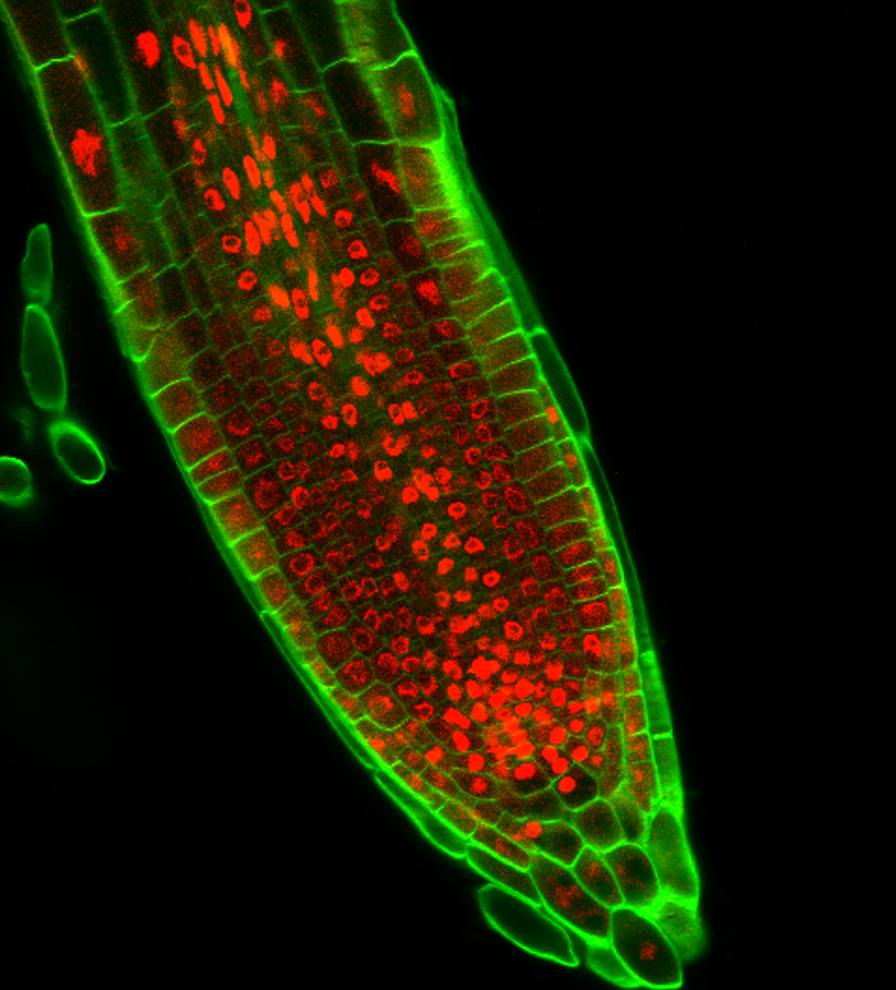Jun. Prof. Dr. Sjon Hartman (CIBSS PI), Plant Environmental Signalling & Development, Faculty of Biology, University of Freiburg
Agricultural crop losses due to extreme rainfall are predicted to increase due to climate change, challenging global food security. Flooding impairs plant survival because non-photosynthetically active tissues (mainly roots) ultimately run out of oxygen (hypoxia). Therefore, the capacity for roots to avoid and/or sustain hypoxia damage is essential for plants to survive flooding. Our recent work shows that the gaseous plant hormone ethylene passively accumulates in submerged plant tissues, and is essential for hypoxia survival. We found that this ethylene signal partially improves hypoxia survival by actively slowing root developmental growth before hypoxia sets in, and that this is dependent on ethylene-mediated control of the plant hormone auxin. We also observed that if a primary root does not survive hypoxia, the seedling has enhanced lateral formation closer to the shoot. Furthermore, a study led by Prof. Kleine-Vehn showed that newly formed lateral roots grow at a more horizontal angle after experiencing hypoxia. Because the severity of hypoxia is dependent on the soil depth, these changes in root growth away from deeper soil are considered to be adaptive. Finally, preliminary results show that root tips have enhanced hypoxia tolerance if they had experienced hypoxia before in life. Collectively, our results suggest that plant roots have several adaptive growth responses that promote plant survival during waterlogging. However, how root growth behaviour is controlled during waterlogging is unclear. In this CIBSS project we aim to investigate what environmental and molecular signals control adaptive plant root growth behaviour during waterlogging.






